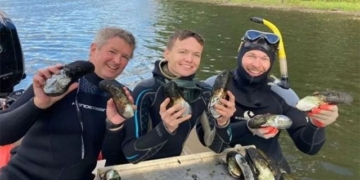Jinichi Abe knows that the rice he grows in Namie, Fukushima Prefecture (Japan) will still have a steady market, even though the area is striving to recover from the twin disasters of the earthquake and tsunami in 2011.
Mr. Abe’s optimism stems from the fact that locally grown rice cannot be sold as food due to rumors about radioactive contamination affecting health. However, it is being used by many large companies across Japan to create low-carbon plastics.

Rice-based plastic pellets at a factory in Namie. (Photo: Reuters).
In November 2022, Biomass Resin opened a factory in Namie to transform locally grown rice into plastic pellets. These pellets, containing 50%-70% rice, are then “morphed” into plates, spoons, and takeout containers in restaurant chains, plastic bags at post offices, and souvenirs at Japan’s largest airports.
Experts indicate that rice absorbs very little cesium radiation, and tests have shown that the rice here does not exceed safe limits. This means that the plastic produced from rice is safe. Associate Professor Atsushi Nakao at Kyoto University (Japan) said: “I truly regret that rice is not being consumed due to safety rumors.”
Mr. Abe (85 years old) expressed: “Without rice, this town cannot recover.” He revealed that rice grown in Namie cannot be sold due to the rumors and was previously used as animal feed in past years. He lamented: “Even now we cannot sell it as Fukushima rice. Therefore, Biomass has truly helped us a lot. We have been able to grow rice without worry.”
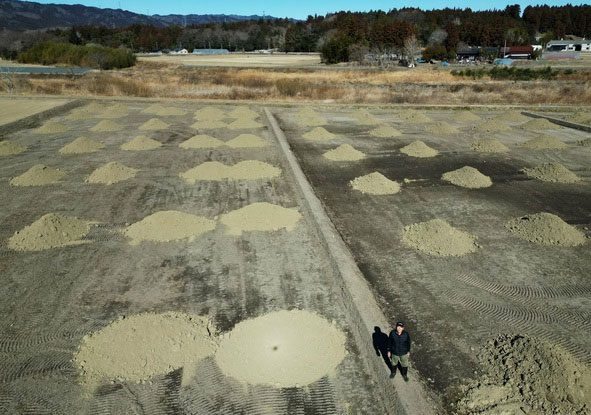
Mr. Jinichi Abe at a site to be converted into rice fields. (Photo: Reuters).
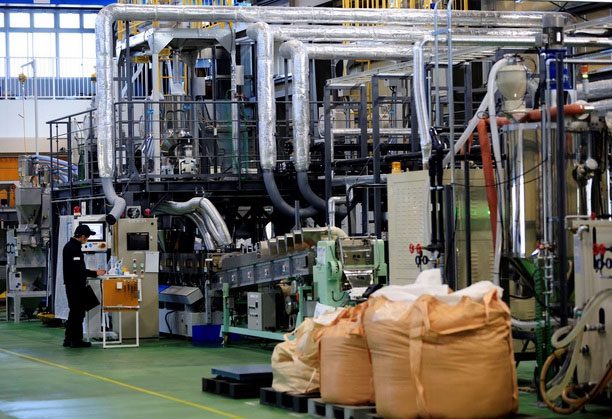
Workers at the Biomass Resin factory in Namie. (Photo: Reuters).
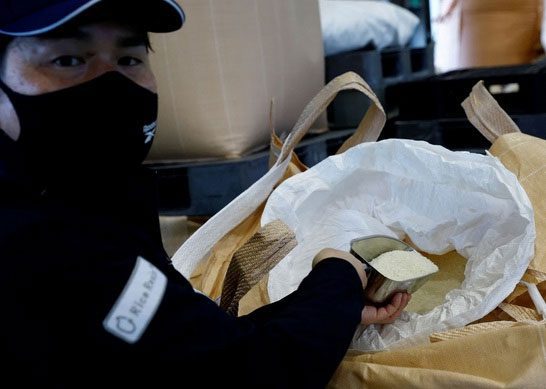
Biomass Resin uses about 1,500 tons of rice from Fukushima. (Photo: Reuters).
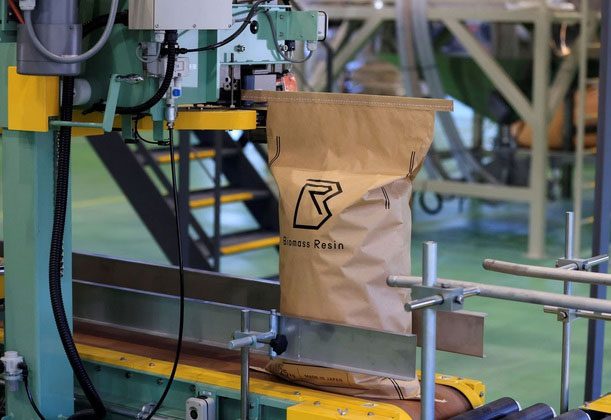
The Biomass Resin factory is located 7 km from the Fukushima Dai-ichi nuclear power plant. (Photo: Reuters).
Some areas in Namie are only 4 km away from the Fukushima Dai-ichi nuclear power plant operated by Tokyo Electric Power Company (TEPCO). The twin disasters in March 2011 triggered a series of incidents at the Fukushima Dai-ichi nuclear power plant. At that time, 150,000 people living within a 20 km radius of the Fukushima nuclear power plant had to evacuate, including the residents of Namie. They were never able to return home. It wasn’t until 2017, after years of soil decontamination efforts, that nearly 2,000 people returned to the town, a modest number compared to the previous 21,000. Approximately 80% of the area in the town is still designated as a no-go zone.
Currently, there is a shopping center, a clinic, a school combining elementary and junior high levels, along with a limited number of jobs. Namie’s leader, Satoshi Konno, admits that everything is still “difficult” and “basically we want businesses to create jobs and production.”
Since 2017, eight companies have come to Namie, creating 200 jobs. Discussions are ongoing between the town and various research institutes and companies that could bring more people in.
Takemitsu Imazu, the leader of Biomass Resin Fukushima, shared: “Namie has been struck by four disasters – earthquake, tsunami, nuclear power plant accident, and the rumors surrounding radiation danger. The town has recovered from the earthquake and tsunami, but the other two disasters remain a heavy burden. By building a factory here, we want to bring jobs and invite people to return.”
Biomass Resin is hiring 10 staff in Namie and uses about 50 tons of rice there. Mr. Abe’s son has left his job at TEPCO to join him in rice cultivation. Mr. Abe remarked: “This is crucial for keeping Namie progressing; it is really good for the town.”



















































